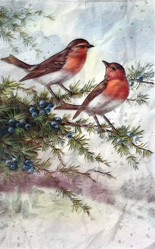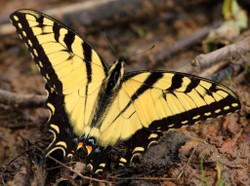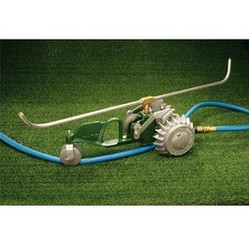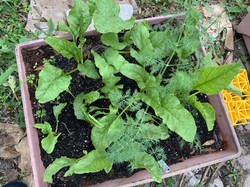Reading about a place that you see assiduously on Friday night television three seasons a year [Winter excepted] gives you a new angle on it and the presenter. Long Meadow has been the home of the presenter for over thirty years, and the garden has become a much-loved experience introducing weekend to British and Irish garden lovers. It is located in Herefordshire. Readers unfamiliar with Britain should not confuse this with Hertfordshire, which is north of London, while Herefordshire is in the West Midlands bordering Wales. It is probably England's most rural county.
Part of the charm of the book is that Monty finally introduces readers to his house, a farmhouse constructed in the Tudor period, oak timbered, as was the custom in the sixteenth century, but with some oaken beams possible dating back from a previous structure in 1372. The garden is a walled garden which Monty has given to flowers and vegetables. There are traces and hints of earlier structures in the garden. For example, he has a brick hop kiln dating from the eighteenth century, which he now uses for storage. We learn that the farm has several fields and that he has an apple orchard with over forty trees, in keeping with the ancient apple-growing and cider making traditions of this county of Western England. This kind of information adds charm to the book.
We also learn that he owns a farm in South West Wales, in the county of Monmouthshire, a hill farm from which some of the wildlife observations in this book were made. The farm is never shown on television and so this is an experience new to readers and viewers. His hill farm is in stark contrast with his Herefordshire home, which is set in the highly fertile, alkaline clay of the West Midlands, low-lying and is an area prone to flooding as the rains that cascade off the Welsh mountains to the West engorge the western English rivers, such as the Wye, which flows through Hereford, whereas the hill farm is on steeply-sloping, thin acid soils. However, the author's opportunity to draw on a wider range of experiences broadens and enriches the garden world about which he writes.
The book answers some questions. I have long pondered how he cultivates the garden on his own, but he mentions hiring a gardener, and having an orchard, which we never see. These make for lighter gardening. We also discover that his son runs the hill farm.
The book is replete with Monty's joy in his garden world, but there is a poignant appendix, which details how on the day after the writing concluded Nigel, Monty's beloved dog, died suddenly. Nigel was a television star in his own right, much loved by the nation, and English viewers mourned his passing. The writing in this appendix is sensitive and revelatory of Monty's feeling for his friend who now lies under the orchard.










 Women of the Gospelson 10/11/2025
Women of the Gospelson 10/11/2025
 Religious Gardenson 08/25/2025
Religious Gardenson 08/25/2025
 Doctor of the Church: John Henry Newmanon 08/03/2025
Doctor of the Church: John Henry Newmanon 08/03/2025
 Restoring the Palm Houseon 07/16/2025
Restoring the Palm Houseon 07/16/2025




Comments
Sadly not.
Sadly not.
This doesn't pertain to your wizzley even as it pertains as something about a bird, therefore like your image left of your title ;-D!
Frederick Coburn found the specimen for whom Richard Bowdler Sharpe furnished the scientific name for the Icelandic redwing.
Two Wikipedia articles, one each for each gentleman afore-listed, lets us learn something about Coburn and Sharpe, the latter more than the former:
https://en.wikisource.org/wiki/Author...
https://en.wikipedia.org/wiki/Richard...
The Coburn article mentions the minimum even as it mulls nothing about the precise birth and death dates of such an accomplished article writer, collector and taxidermist.
Would you know anything more about Frederick Coburn?
True over here as well
Thank you for your comment below, on Feb. 15, 2024, in answer to my previous, same-day observation and question.
The day before yesterday and yesterday I did fall-ending, winter-beginning lawn and yard work. My bluebird and my ovenbird gave me vocal if not always visible company even as my robin kept quiet somewhere.
Some Unitedstatesians look at east- and west-ponder robins as among the most vocally accomplished and varied.
Might that be the way British Isles-ers view them?
Yes. They are robin's.
The image to the left of your title has two red-chested, red-faced birds.
Might they be European robins?
You are right.
Perhaps the spell checker rendered shifts from what should have been swifts, in your comment yesterday in answer to my previous, same-day observation and question!
Generally the migratory birds such as swallows and shifts signal the warmer months..